Interview: Animals As Leaders' Tosin Abasi
The Total Guitar interview
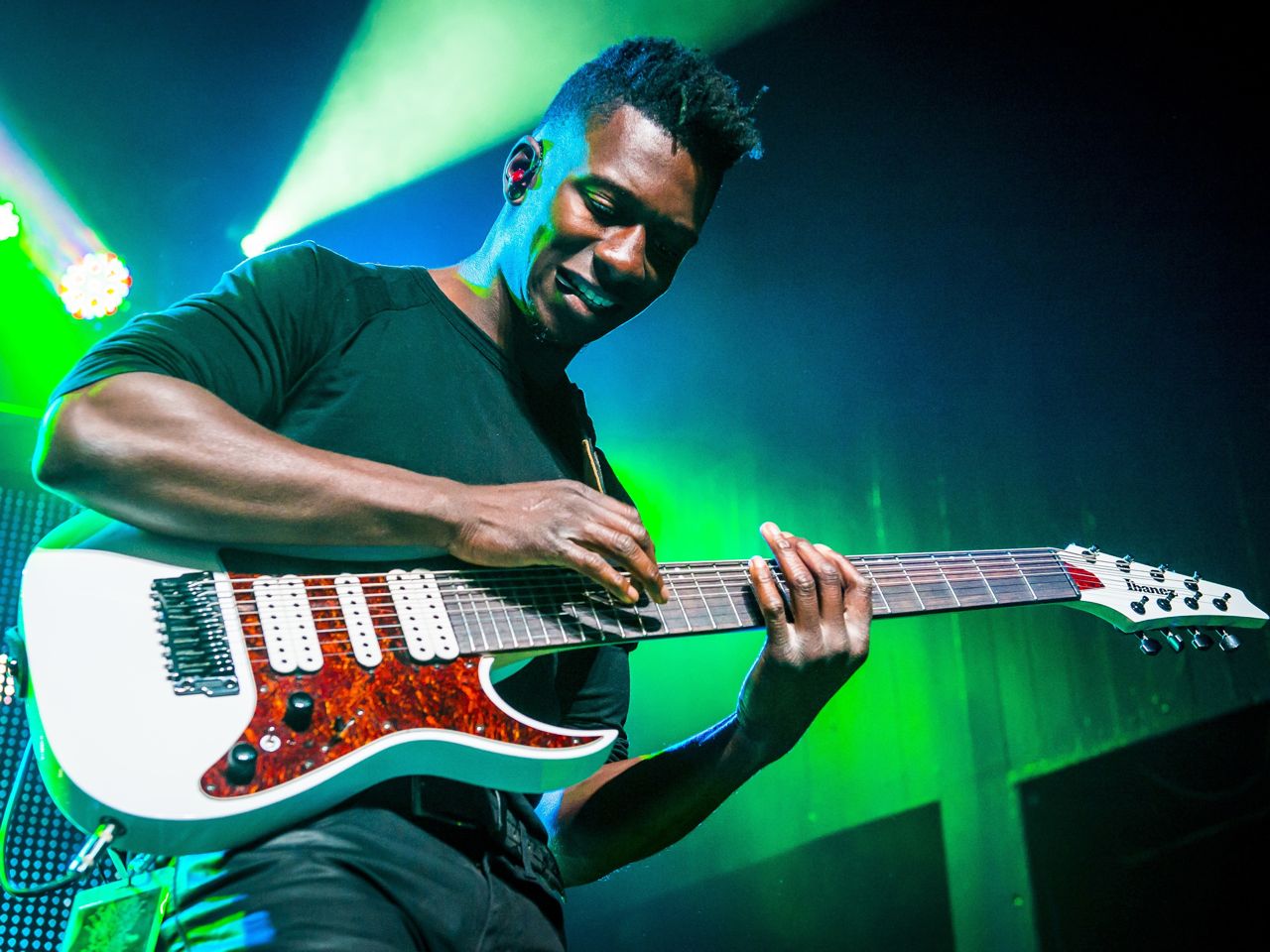
Tosin Abasi
Tosin Abasi is regarded as one of the key progressive guitarists of his generation for very good reasons. Many can be found on the new Animals As Leaders album, The Joy Of Motion. His instrumental trio with fellow guitarist Javier Reyes and drummer Matt Garstka create a sound that's equal parts technical, tuneful and inventive. Fulfilling the potential of the eight-string guitar.
Talking to Tosin about the album and what drives him in this extensive interview reveals an inspiring musician eager to share and credit his own influences, while explaining exactly what he’s doing on some of these jaw-dropping compositions.
Starting work on this album, did you reflect on the previous album Weightless and what you wanted to achieve?
“Weightless was a curveball for a lot of our original fans. I think primarily because the original collaboration with Misha Mansoor produced the first album [2009's self-titled release] and people got used to that. Then, with Weightless and my guitar playing I started getting into a lot of modern jazz guitarists like Adam Rogers and Kurt Rosenwinkel. Some of my harmony, and inclinations started drifting further into that territory. So I think there’s harmonic content on Weightless that some people would consider less melodic in a way but it was because my ear was going to other places.
"With Weightless it’s definitely kind of divisive, some fans will openly say they didn’t like it as much, some fans will play it all the time. For the third album, for myself I definitely enjoyed that first album collaboration so I touched base with Misha and he wanted to demo some songs together. I think it was January 2012 that I flew out to him and we knocked out seven songs that I had loose sketches for on the guitar alone. Then we kind of built them up into pre-production tracks together.
"Then, as far as the direction, we definitely wanted to incorporate live drums for the first time. On Weightless we brought in an electronic kit but we were still triggering sampled sounds. Our new drummer is a phenomenal player so we were committed to capturing his performance. I think that really adds to the energy of the actual recording and then with guitar tones we worked with Nolly [Adam Getgood], he’s the bassist from Periphery but he’s also a phenomenal guitar player. So he basically engineered; all the drum sessions, he did the mix and the guitar recording. He was integral. We worked on guitar tones together and I think we’ve captured some of our most organic guitar tones that we’ve had on recordings."
What did you want to achieve as a player on this album?
“With my playing, one thing I wanted to do was... acknowledge the position that comes with being a quote/unquote ‘shred guitarist’. Where you almost have to outshred other people, or outshred yourself at least, that seems like a pretty worthless motivation as far as producing quality music is concerned. So I definitely had to battle internally: ‘Oh, man, do I have to play faster than I did on the last album. Do I need to incorporate more than I did before?’ And what I did is actually a total 180. This album has the least amount of shred [compared to the others], and I started listening to guitar players that were playing R&B, gospel and neo soul... this really lyrical, stylised mix of blues, country and jazz. A lot of doublestops, a lot of chromatics, not in the jazz sense per se – it’s definitely more rooted in kind of a blues. So I spent a year obsessing over guys like Jairus Mozee, Isaiah Sharkey and Jimmy Herring.
"I feel like my playing actually transformed between the year I demoed the tracks, and subsequently started doing the final recording process nine to 10 months later. A lot of the lead work is different from anything you’ve heard from me. I focused on bends and vibrato, things that most players use – but for me, it wasn’t a focus [before]. So I’m pretty proud of the development.
"Where you almost have to outshred other people, or outshred yourself at least, that seems like a pretty worthless motivation as far as producing quality music is concerned."
What was the biggest challenge for you personally with this album?
“Honestly, the biggest challenge was that mental dialogue. I felt like I could do the same thing that we’ve been doing in a negative way. I was battling creatively; am I moving forward? Since we put out the first album there’s been a multitude of amazing bands and amazing guitarists, a lot of adventurous music. So the climate of when I first conceived Animals As Leaders is totally different.
It was hard to make creative decisions if I started thinking about everything else that was going on. And then I eventually thought, man I just want to make something that’s essentially Animals As Leaders. That fundamentally sounds like us. Not that we’re trying to reinvent ourselves but we’re refining what we do. It’s a distinct and deliberate sound, and that’s kind of what it ended up being.”
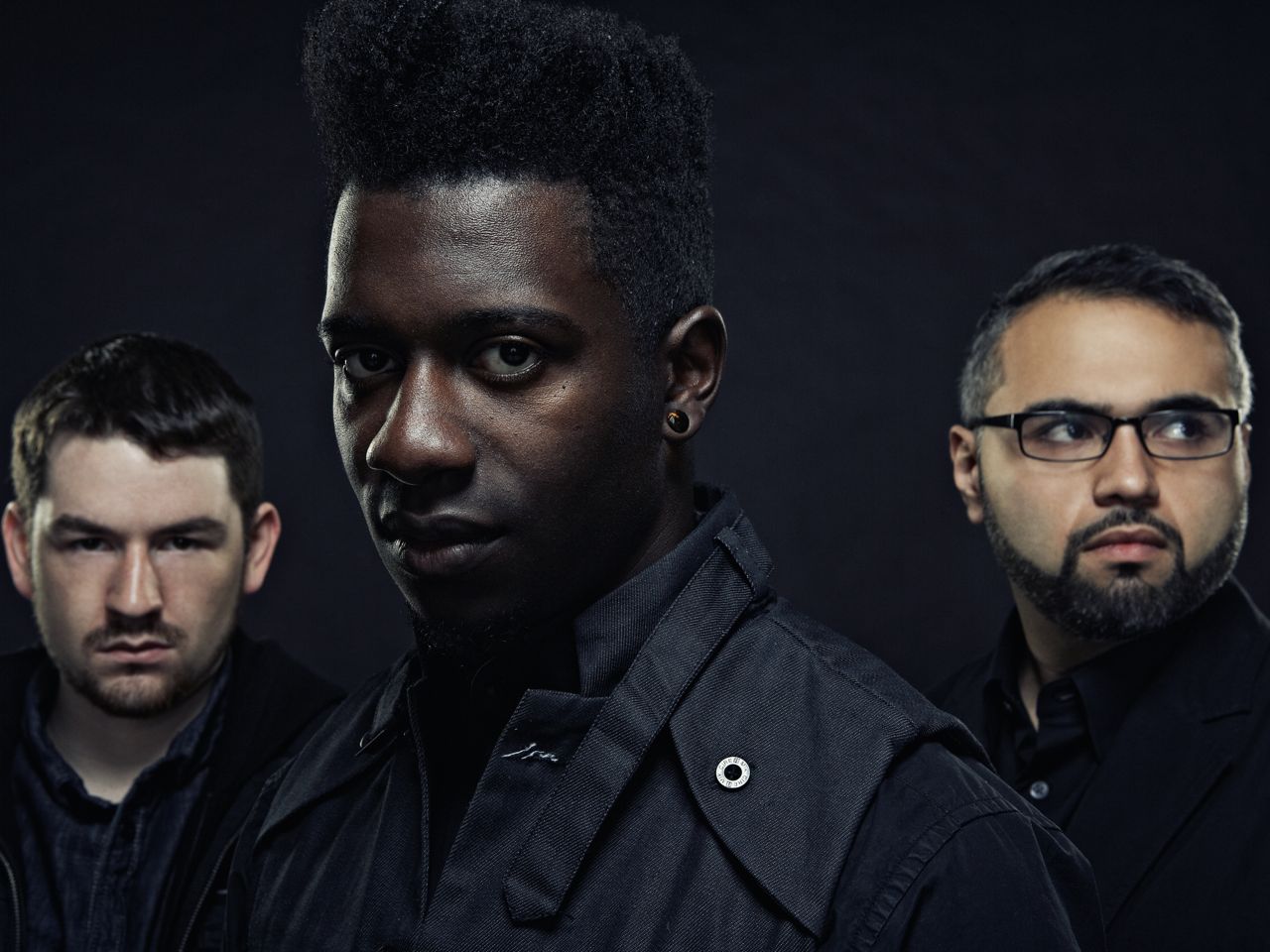
Technique
It sounds like your percussive thumb and finger technique has developed significantly on this record. How conscious have you been of that?
“The slap technique is interesting, because when I first learned it I was really obsessed with fleshing out all the potential, and I’ve used it on all the Animals As Leaders albums. But it’s not something I hyper-focus on. It’s one of those techniques that, once you’ve got it, you can just do it. You’re hearing some progression on this album because this is the first one where I’ve incorporated my ring finger. So before, I was doing these number combinations based on my thumb and first two fingers. Then I was able to start incorporating my ring finger and a plectrum. Now, I’m doing these groups of seven and five. It’s still slapping, but instead of using my thumb, I’m using my pick. I’m building phrases by hammering on maybe three notes, and then completing the phrase by picking two notes.
“It’s not like alternate picking, where you’re fretting each note and using your pick to produce the note. This is separated; either you’re hammering on [with your fretting hand] or picking [with pick and fingers]; I call it selective picking.
“The song Ka$cade is actually an excellent example of that because that whole song is built on groups of five where I’m hammering on a minor triad with three notes on my left hand and then I’m doing four and five with my pick. That’s something you wouldn’t have heard on any of the Animals As Leaders albums before. It’s definitely an evolution of the slapping stuff. But we try to incorporate it when we need tight rhythmic syncopated parts and it has a unique timbre. It’s a lot different to palm muting, and I think it highlights the beauty of the eight-string guitar.”
Physical Education is one of the most enjoyable tracks to hear on the record, and the way slapping is used to create the groove is especially interesting; it fills a very percussive role. Is that just one guitar part in the intro?
“Yes, it actually is. That’s cool that you like the song, because we were actually nervous [about it] as it’s quite different to your typical prog-instrumental track. With that song, we just wanted a heavy groove, and it’s actually the most moderate tempo in a song that we’ve used. So it’s one guitar you’re hearing, multi-tracked on the album, left and right.
"It’s one guitar part, and it’s the first time I’ve done this with slapping: I’m using a defined sound with the slap and the open strings, so it gives you like a kick-drum sort of element. And I’m doing muted harmonics, so it almost sounds like a kick-and-snare sort of phrase built together. It’s the first time I’ve done that muted harmonic thing, and that is such a moderate tempo. So that song is definitely one of my favourites on the album, too.”
Another Year is quite an upbeat, jazz fusion composition. It feels different to what you’ve done before too…
“That track is actually quite old. Some of the material on this album was conceived back when I wrote the first album. We just didn’t have enough space to put it all on. So I called it Another Year because it’s another year this riff exists and may or may not recorded. But it finally happened.
“Our other guitarist Javier [Reyes] was working on six-string inversions of major seventh chords and he was showing them to me and I was just using G major or something, using the inversions. Then I started to try to build, in the middle of the song there’s this descending… it almost sounds like gospel or something like that. I started to play with these inversions to try to create this chord progression outside of my comfort zone.
“We were on the fence about it because it’s definitely not heavy at all and, like you said, it’s pretty upbeat and almost optimistic. We weren’t sure if it made sense [for us] but Misha said, ‘Dude you have to use this riff, I don’t care what you say.’ So we ended up recording it and I hope people like it.”
Moving on to the track Mind-Spun, there's some really interesting low arpeggios going on about a minute into it…
“Mind-Spun is this technique I was messing with years ago and I stopped doing it. It’s when you sweep pick but in the lower register. Most people players are arpeggiating in the upper register but I just decided to start doing it down on the first few frets as if I was riffing but I’m using the mechanics of sweep picking. I’m palm muting at the same time and what I’m doing is I’m ascending a chord and then shifting positions and descending a new chord, then shifting positions and ascending a new chord. So you’re hearing me sweep pick but for every stroke downwards there’s a new chord and for every sweep upwards there’s a new chord.
"That arpeggiated section is these minor triads that are moving in that way. The synth is unison on the record because we just wanted to have a more interesting sound than just the guitar.”
There’s a wide range of moods on this album, and it feels like your modal vocabulary has become even wider…
“I’m pretty abstract with creativity, and the diversity you’re hearing melodically and rhythmically is because some of that material is years old, and some of it’s quite fresh.
"So you’re hearing a span of my focus over multiple years. Harmonic content has been something I’ve been more focused on, because at the beginning of my playing I could only learn by watching other guitar players’ fingers. So I’d be like, ‘Okay, cool, what’s that shape?’ And I’d try to emulate it just by what my ear can understand."
“And I ended up going to a music school that taught me how to construct chords and how chords function in a family called a key, how you can use substitutes in chords in that key to create different effects... I started to gravitate towards really interesting chord voicings and non-diatonic harmony; how I can force key changing with different chords.
“There’s some songs in there, like Another Year, that were a case of me working specifically on inversions of major-seventh chords. All of a sudden, through that practice, I end up with a tune. If you listen to Lippincott – I named it after this guy called Tom Lippincott. He had this online masterclass that focused on melodic or harmonic major, one of the two – they’re closely related scales. I’d been familiar with melodic minor, but melodic major was definitely a new sound for me.
"Through watching this guy’s tutorial on the whole diatonic family of chords in this kind of tonality, I wrote this song that incorporated some of that harmony. And the augmented scale was part of that as well, so if you listen to Lippincott, you’re hearing the augmented scale as well as the harmonic-major tonalities.”
Para Mexer is a song with nylon string and quite another different feel for the band, how did that develop?
“Javier wrote that. He’s an amazing classical guitarist, it’s his first instrument and he’s been doing it since he was five or something like that. So he’s developed a really cool style with it, developing odd meters and extended range into nylon string guitar. He had the first few riffs and he was playing it on tour and I thought it was really cool. He has his own side project called Mestis but I heard that riff and I said, ‘Dude I think that would actually make a cool Animals As Leaders song’. So I ended up learning it and contributing some of the middle sections.
"It’s the first song that we’ve recorded with drums and full production that is acoustic and major. Godin was nice enough to give me a seven-string nylon that just sounds superb direct and it plays phenomenally.”
On the whole, is this album still a case of mostly being your own vision, or was this a more collaborative album for Animals As Leaders than ever before?
“That’s a good question, because the answer is yes and no. It’s still primarily my creative output. A large percentage of what your hearing are my musical ideas at the core, but Misha has a knack of taking guitar riffs and gluing it all together. So that’s why I like working with him. I think he’s an excellent producer. He’ll hear what I have and he’ll create a layer with a second or third guitar part that just compliments it beautifully. So working with him is very synergistic. It is highly collaborative but at the seed of these songs are my ideas. Then it’s futher collaborative because we working with Nolly on the production side so usually it was either with Misha collaborating on the songwriting and then the mix as well with Nolly.
"With Weightless, we did it all internally so there was no outside involvement. On this one we had co-production / co-writing with Misha Mansoor and some pre-production co-writing with Diego Farias who plays in a band called Volumes. We had three tracks that we demoed with him. Nolly came through and engineered the recording sessions. When I was tracking my leads I’d record a sketch then we’d go back and try to get the best executed take. Nolly would suggest things like, ‘Hey instead of sliding to that note, slide higher’. So he had input on the leads. Then we had someone else master it so you’re hearing more people involved in this album than our previous ones.”
It feels like you’ve struck a successful balance between progression as a player with the heavy groove elements that fans obviously enjoy, was that a challenge to begin with?
“You do start to do this decision thing where you think, maybe we should not do this or maybe we should do more of that. With this album it kind of unfolded with this balance. I think it’s because we didn’t feel like we had this competition – what I was saying about outshredding – we just wanted to make musical decision that we felt were sound and that complemented the sound. And that, coupled with the diverse range of musical ideas on the album, creates balance as well.
"You can’t say it’s too skewed towards palm muting and heavy breakdowns or that it’s too shreddy. It was kind of an organic balance that developed and we’re happy about it.”
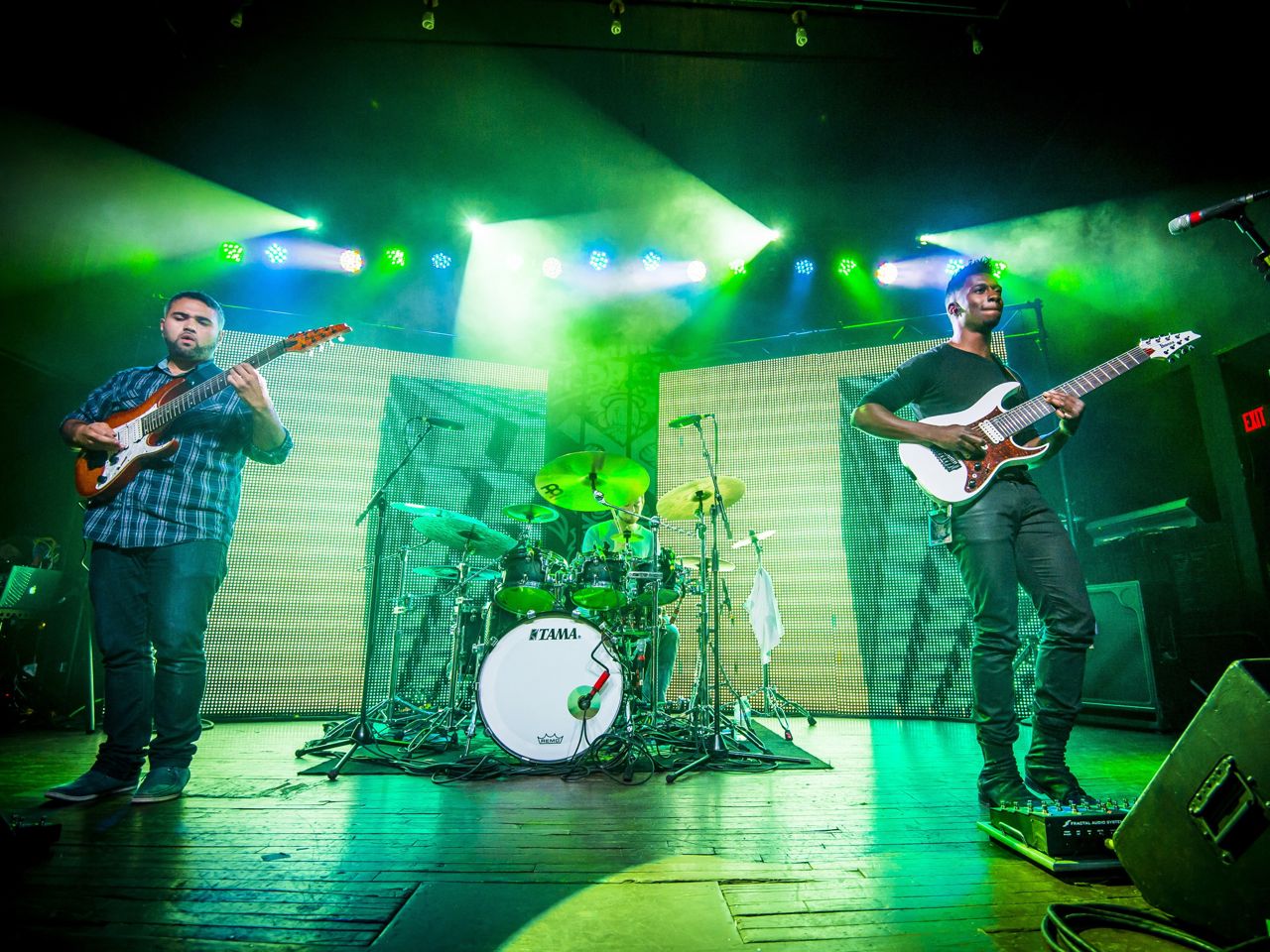
Gear
Tonally this record is a step up, did you use the Fractal Axe-FX again?
"Yes, but the one thing we did different is there’s this boutique builder called Daniel Kline and he has this company called Port City. He makes these amps; they’re single channel hand-wired heads. He has an Axe-FX, though he’s obviously a boutique guy and he’s doing handwired stuff. But he was feeling that there weren’t any really amazing amplification options for the Axe-Fx.
"This head, the Pearl, is almost like a super super clean early Fender tube head. You plug the Axe-FX into the front end of it, so you’re actually utilising its EQ and its preamp and stuff like that, but it’s so clean it’s just one step above a power amp in a way. It imparts amazing tube feel and response.
"He also builds cabinets, a design that he’s patented with triangular baffles behind the speakers so you don’t get compressed air behind the cone and the wall of the cab. You get air movement. We Tone Matched the Port City Pearl and the OS cab and we used that patch as the final step in the Axe-Fx, so all the preamp and all the effects you’re hearing are coming from the Axe-Fx but the further amp tone response is coming from the Pearl, so that is the final product.”
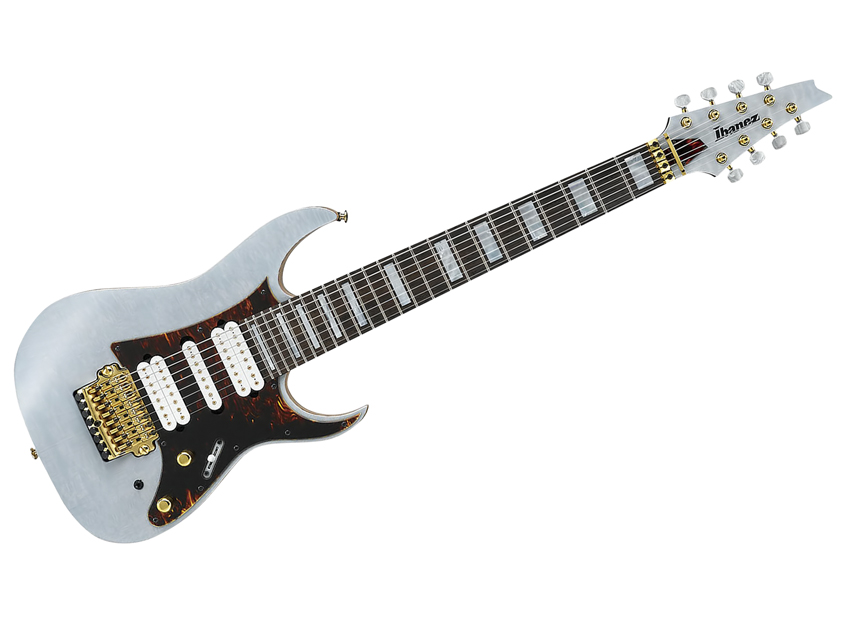
Was your signature Ibanez TAM100 the main guitar for tracking?
“Primarily, we used was my signature guitar, but I have a Strandberg that also has a set of [DiMarzio] Ionizers, my signature pickup, in it too. The Strandberg guitar is semi-hollow, so for certain things we found the clean tones had a bit more of an acoustic quality. So we used the Strandberg for some, and we also used the Godin Multiac Grand Concert 7 for the nylon-string track [Para Mexer].
"For Physical Education, the tuning for that is quite a bit lower than even the standard eight-string. It’s down to Db, or C#. It’s almost like a five-string bass range. So I have a Strandberg that actually has two extra frets. It has an extended neck for the last two strings. I also have a Rick Toone guitar [a Blur model] that has the same sort of weird baritone extended range just for the last two strings. So for Physical Education, we used the Rick Toone to get that low tuning. The scale length on it is 30 inches, or something like that. So that note you’re hearing is a C# on a 30-inch neck. Everything that’s rhythm guitar, lead guitar and clean is my signature guitar.”
You’re a player who has showcased the potential of the eight-string guitar. What do you think about what others are doing with it – do you feel extended-range guitars are often used merely as a path to lower tuning?
“There are all these companies producing extended-range guitars, and I think it’s really awesome. I think it attracts people that want to do heavy music because it’s really effective at doing that. A lot of bands who are popular in heavy music right now are using extended-range guitars, so guys think, very rationally, 'I should just buy the instrument my favourite band is using, and then I’ll sound like that'.
“So that’s fine, but I think there’s a healthy number of guitar players wanting to know about music theory and technique – more than, say, in 2000. I don’t know who was popular then – say Papa Roach or something like that… Limp Bizkit or whatever, you know what I mean? So extended-range guitar seems to be sort of parallel to the kind of guitar player who wants to do a three-octave arpeggio, or wants to do a chord melody. Someone who really wants to understand the fretboard.
“There’s a percentage of guitar players who just want to utilise the lower strings, which is fine too, but in my experience, I’m encountering a lot of players who are asking me about my musical education, 'Who did I study? What harmonic concepts am I interested in?' These are teenagers. I wasn’t really asking these questions when I was a teenager. I was obsessed with speed, and things that were obvious to me; that I could look at and translate. But these kids are wanting a deeper understanding.
"I think progressive music promotes this yearning to understand music on a more complex and deeper level. The extended-range guitar seems to live in that arena, too. I see a lot of cool stuff on YouTube, and I think there’s a lot of creativity, so I think we’re in for a new wave of future guitarists.”
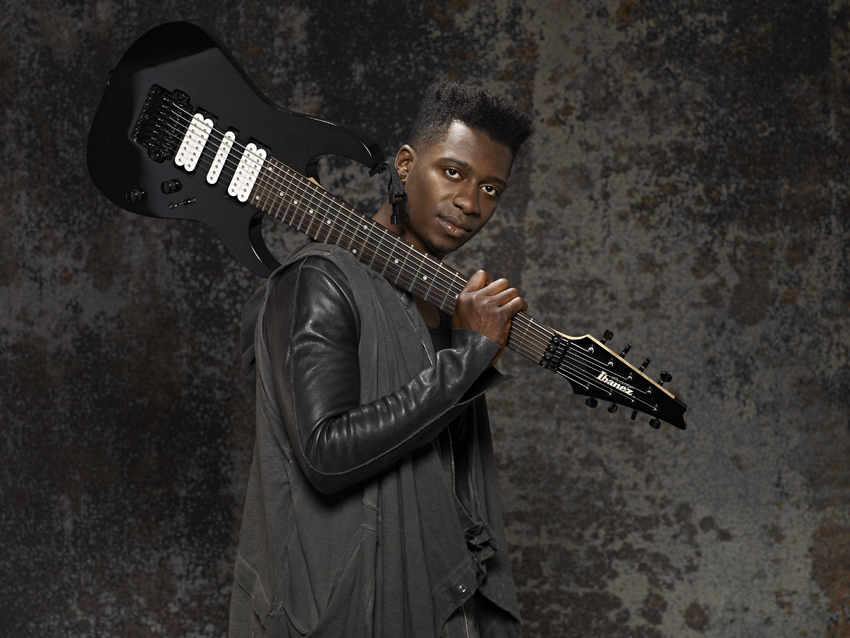
A new generation
You travel around the world doing clinics with young players, has that been personally fulfilling for you?
“Absolutely. That’s when I experience the impact of my music on guitar players the most. Honestly, to hear people say they’re inspired by my playing is the greatest thing I could receive. Inspiration from other musicians, and even clinics, are what drove me to practice for all those hours and really set the bar in the dream area; who are my dream guitar players? Could I ever reach their abilities? What have they done to do that? You need to be inspired to put that much energy into something and to feel like it’s even possible. So clinics are really cool because I get to really break down what it is I’m doing and present it to guitar players, and I think sharing is super cool. I think it’s nice to put that information out there and to have people be interested is enormous.
With all these talented young players coming through, could it be more difficult than ever for instrumental guitarists to make their mark? Is it more vital than ever for them to find their own voice on the guitar early on?
“Yes, you’re totally right, it’s the only way you’re going to stand apart because there’s so many phenomenal guitar players around the world. But beyond technique, it’s still music – it’s not a competition, it’s expression. So I really try to promote guitar players having their own individual voice. Because they can do something that no one else can do as well as them because obviously, it’s them.
"I think a lot of aspiring guitar players look to other guitar players, and emulation is one of the means of progressing on your instrument because you try to sound like someone who’s already accomplished. But you can get lost in emulation, you can lose yourself, so I try to promote individuality because that is when you hear a guitar player and you know exactly who it is. Beyond that, my advice would be not being so focussed on guitar playing that you forget about writing a song that has impact on an emotional level.”
How conscious are you of the expectations of other players now your profile is higher? Are you at peace with it or is it always there at the back of your mind?
“It’s kind of crazy because there are so many guitar players who are deserving of being on the cover of whatever guitar magazine, who may never get that actual validation. So for me to get it more than once, I’m extremely grateful, but I think of all these guys who are amazing and also deserving. So I feel that there is this pressure to live up to the attention, and that’s a new element. It never drove my guitar playing [before], I never aspired to that but maybe the aspiration is more of a motivation than the pressure [now]. I try not to overthink that stuff, I guess it’s a good problem to have.
"I hope with this latest effort, I feel there’s a bit of refinement to my lead work and my playing. It shows where my appreciated for guitar playing lies. I had a lot to prove on the earlier stuff and there’s a lot I didn’t want to do on the first Animals As Leaders. I didn’t want to sound like a blues player, there’s already been your Stevie Ray Vaughan and Joe Bonamassa, there’s all these amazing blues guys. I didn’t want to do bends or bluesisms. So I avoided a lot of conventional and really awesome guitar elements in an effort to sound apart. And the biggest thing with this album is I embraced a lot of that stuff because I just think it’s awesome now. I’m curious to see what people think about that.”

Rob is the Reviews Editor for GuitarWorld.com and MusicRadar guitars, so spends most of his waking hours (and beyond) thinking about and trying the latest gear while making sure our reviews team is giving you thorough and honest tests of it. He's worked for guitar mags and sites as a writer and editor for nearly 20 years but still winces at the thought of restringing anything with a Floyd Rose.

